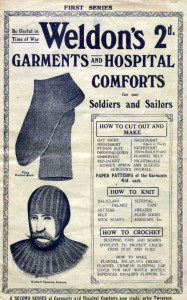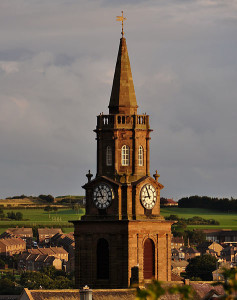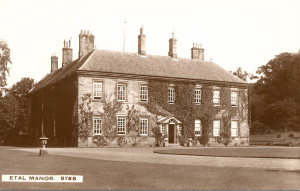William Wailes was one of England’s most accomplished and visionary stained glass manufacturers. A key partner in the internationally renowned firm Wailes and Strang, William used his artistic flair to promote philanthropy, decadent design and religious adulation.

German Glass
William was born in Newcastle Upon Tyne in 1808, the youngest son of Thomas Wailes. He had at least three siblings; George, Margaret and Elizabeth Anne. In the early 1830s, whilst still a youth, William traveled to Germany to develop his skills in glass production. Glass production was a meticulous art to master, and contemporaries often commented upon Wailes’ dedication to his chosen trade and the long hours he sacrificed to producing unique and precise designs. Upon returning to the North East he gradually established his own business in manufacturing and designing glass, by creating his earliest designs in a low-budget kiln.
Wailes advertised his abilities through various regional and national newspapers, mixing European techniques with competitive pricing. His hard work eventually paid off and his company soon became renowned for their unique ability to harness the bright colour pigments in glass (a difficult feat in the mid 1800s). Soon his work was being incorporated into religious architecture across the world. These intricate designs can still be enjoyed in many places today including India, Newcastle and Low Fell.

The success of his firm led to the employment (at any one time) of between 60 to 100 persons. William had a good reputation as an employer and, when one of his employees died in 1852, journalists at the funeral commented upon the bond between Wailes-Strang workers. William also enjoyed a good personal reputation, becoming Overseer of the Poor in 1848 for the Parish of Newcastle and patroning pupils from the Institution of the Deaf and Dumb.
Keeping the Business Personal
In January 1834 William married his wife, Janet Elizabeth Carr, at Alnwick. The couple had at least four children; Margaret Janet born in 1834, Anne Kirwood born in 1836, William Thomas Wailes born in 1838 and John Carr Wailes born in 1841. Whilst their youngest son, John, died at the tender age of nine their other children all survived to adulthood.
The Wailes and Strang families were closely interwoven, both personally and professionally. Margaret (William’s eldest daughter) married Thomas Rankin Strang, a partner in her father’s firm and a celebrated stain-glass manufacturer. Together they would have one son, William Wailes Strang, who would continue the family’s glass making legacy. The Wailes’ own son, William Thomas, married Jane Ward and together they had two daughters Frances Margaret and Ann Elizabeth.
In 1861 William and Janet were living in South Dene Towers, Gateshead. Their household at this time was substantial; comprising of their daughter Margaret, their son-in-law Thomas Strang, their grandson William, the ageing Wailes sisters Elizabeth and Margaret, three domestic servants, a visiting widow called Isabella Le Berkeley and a Sarah A Pashley. Their neighbours at this time were the Peasel’s who had made their fortune from banking. Also living nearby, in a row called “Wailes’ Gardens,” were a dozen or so gardeners. These men most likely worked for William on his new vision – redesigning Saltwell Estate in Gateshead.

Saltwell Park
William’s creative vision led to him purchasing the site in the 1860s and building of a decorative mansion (known as Saltwell Towers). The building, gothically styled, is still greatly imposing with its soaring towers and numerous windows. In 1861, shortly after purchasing the site, William is listed as owning ten acres and employing three men, fourteen boys and two women to care for his land. These individuals were most likely employed to help William realise his vision of cultivated gardens. Ten years later, in 1871, William owned 235 acres of land across the region.



However, almost twenty years after purchasing Saltwell Estate, William ran into financial difficulties and was forced to sell his dream to the Gateshead Corporation whom opened the gardens up as a public park. In the heart-breaking deal William was allowed to remain resident in the towers until his death in 1881.

The Will of Women
When William Wailes died in 1881 his will outlined how his personal estate, estimated in local papers to have been worth £25,403 3s 5d, should be divided between his family. This original document has been found amongst papers within the Dickson, Archer and Thorp collection and its date, late January, suggests it was hastily written on his death bed. The majority of William’s surviving blood relations were female, and it fell to them to both divide and claim his assets. These included his two daughters, two granddaughters, widowed daughter-in-law and two sisters.

He had appointed his daughter Anne Kirwood, his friend John Gibson and his son-in-law Thomas Rankin Strang to be his executors and trustees. He left a watch, belonging to his previously deceased son William Thomas, to his only grandson William Wailes Strang. He left his recently widowed daughter-in-law £20 for mourning, but instructed that her daughters should remain in the care of their aunt Anne Kirwood. Anne was to therefore act as the girls’ live-in mother and trustee until they reached the age of 21. William also bequeathed to his trustees and executors any money still owed to him by the Gateshead Corporation for the sale of Saltwell Park, and assigned yearly allowances to various family members. He also bequeathed gifts to the institution of the Deaf and Dumb.

The signature of William Wailes Strang, DN/E/8/2/2/137
William may have been gone but his legacy continued through his gifts of philanthropy and his grandson’s development of the family glass making business. William was an exceptional force admired for being hard-working, charitable and upstanding – the ultimate Victorian gentleman.

We would like to thank the volunteer who carefully transcribed the last will and testimony of William Wailes, without which this blog would not be possible.





